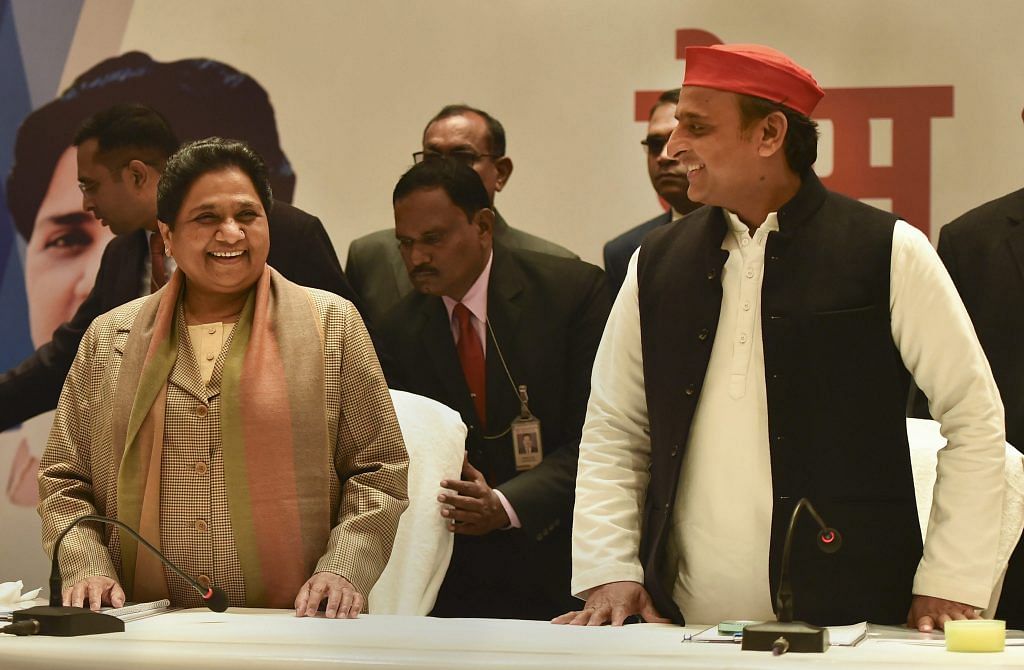The vote bank politics in Uttar Pradesh is taking a U-turn — from the Bahujans to the Brahmins — signalling a shift not seen in the last three decades. Leaders cutting across the political spectrum, from Priyanka Gandhi Vadra to Mayawati to Akhilesh Yadav, are wooing the electorally dominant Brahmin community. Vikas Dubey’s ‘encounter’ was just the trigger these parties were waiting for, but the reasons are as old as key lessons learnt from elections in 2014, 2017 and 2019.
Estimates from various studies conducted by the Centre for the Study of Developing Societies suggest that the Brahmins constitute about 10 per cent of total voters in Uttar Pradesh — a sizable chunk that can have substantial influence over the politics of the state. It is this number, which is forcing all political parties to compete with each other.
The ongoing clamour to become the voice of the Brahmins shows the diminishing returns of focusing solely on their core Bahujan politics that they have practised over the years. But this no longer guarantees the seat of power in Lucknow. To win in UP now means breaking the Brahmin vote, which voted en bloc for BJP last time.
Also read: Mayawati and Akhilesh Yadav must read Jyotiba Phule before erecting Parashuram statues
Brahmins and BJP
Evidence from studies conducted by the CSDS suggests that while the BJP did garner votes from various castes communities during the 2014 and 2019 Lok Sabha elections, and 2017 assembly polls, it was the Brahmin vote that played a key role in these victories. Ever since the decline of the Congress in the 1980s, the Brahmin vote has significantly shifted towards the BJP. In fact, a major reason for the Congress’ decline in Uttar Pradesh and some other cow-belt states is the shift of the Brahmin vote away from the party.
Although the Brahmins have been voting for the BJP in sizeable numbers since the mid-1990s, this massive shift was only witnessed in the last three elections of 2014, 2017 and 2019.
During the 2007 and 2012 assembly elections, 40 and 38 per cent Brahmins voted for the BJP respectively, but in the 2017 assembly polls, 80 per cent of the community’s votes went to the party. The 2014 and 2019 Lok Sabha elections also witnessed 72 and 82 per cent of Brahmins voting for the BJP, which was nearly double its support base among the community in the Lok Sabha elections held earlier. Hence, the BJP needs to retain the Brahmin support if it wants a repeat of 2017 in 2022.
Also read: Opposing Ram in 1990s was easy. Yadavs’ secularism will be tested with Krishna in 2020
2019 learnings
When the Samajwadi Party (SP) and the Bahujan Samaj Party (BSP) had joined hands during the 2019 Lok Sabha election, they had hoped their social coalition would not leave much space for the BJP. However, the political experiment fell flat with the SP managing to win only 5 Lok Sabha seats while BSP settled for 10. It was the loyal Brahmin vote bank that yet again worked for the BJP.
It is their learning from the 2019 Lok Sabha defeat that makes Akhilesh Yadav and Mayawati realise the importance of the Brahmin vote. They need to break the near monopoly of the BJP over the Brahmins and at the same time keep their own vote back intact.
Building statues is Mayawati’s forte. Be it of Ambedkar, Dalit icon Kanshi Ram or her own. This time, the BSP leader has set her eyes on Parashuram — the newly discovered icon of the Brahmins in Uttar Pradesh. However, she is receiving tough competition from her former ally Akhilesh Yadav.
Author Saeed Naqvi wrote a book titled The Last Brahmin Prime Minister of India in the 1990s. It was the heady decade of social justice and even talking of Brahmin voters was regressive. Much has changed since then.
Sanjay Kumar is a Professor and former Director at Centre for the Study of Developing Societies (CSDS). He is also a well-known psephologist and political commentator. Views are personal.
